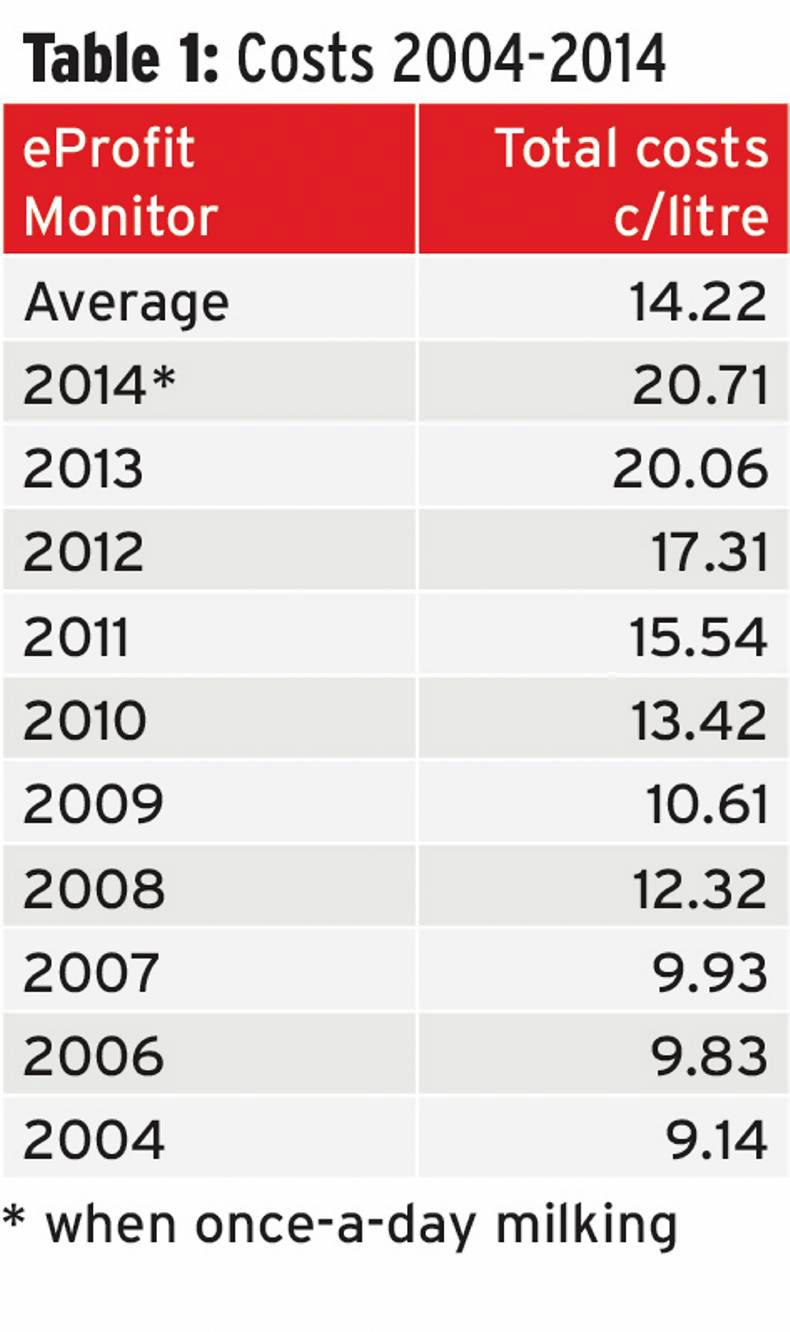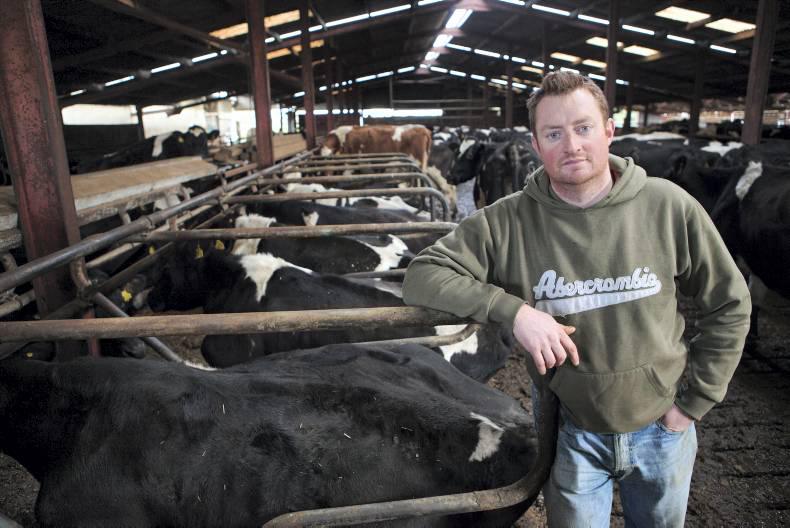In 2007, Gerard and Feargal Rochford were milking 190 cows on a 135ha milking platform. The two brothers had been farming together since the 1970s, moving from a traditional mixed farm with dairy, beef and tillage, to a specialised low-cost dairy farm by the late 2000s.
At this stage, their two sons, Bernard and Mark entered the business and the family sat down to devise a plan. Their goal was to develop a growing business that would provide a good standard of living for all partners, be enjoyable for everyone and to work in a happy, family farm environment.
In 2016, the Rochfords will milk 550 cows on their home farm in Laois and 330 cows in an equity partnership with their cousin Patrick Hennessy on a leased farm in Co Kildare.
This is serious growth, especially when you consider that most of the growth occurred during the quota era. So how was it done?
Mark explains: “Before we started to expand, our cost structure was very competitive. This gave us the cashflow to expand organically with little overall borrowings. It allowed us to buy down quota from the exchange and, as it was a partnership, more than one of us could purchase quota.
 “We didn’t have the best cows and we weren’t the best grassland managers, but our cost base meant we had a cash-rich business.”
“We didn’t have the best cows and we weren’t the best grassland managers, but our cost base meant we had a cash-rich business.”
Table 1 shows the total costs of production from Profit Monitor for the Rochfords for the ten years from 2004 to 2014. While total costs have risen during this time from 9.14c/litre in 2004 to 20.71c/litre in 2014, when cows were milked once a day, the costs are still extremely low, one of the lowest in the country.
Focused investment
To achieve this low cost base, the Rochfords have avoided spending money on machinery and other non-productive assets.
They have focused investments on herd genetics, milking facilities, soil fertility, reseeding and land reclamation – all of which offer a high return on investment and mean that farm operating costs can be kept low.
As a portion of their land in Laois is liable to flooding, Mark explains that they have invested heavily in drainage and methods of getting the water off the land quickly.
Hollows have been filled in, shallow valleys have been dug to take water away and open drains in low parts of fields have been dug and piped to main drains, all in the effort to get the flood water away as fast as possible.
No cow has been purchased during the expansion phase, either for the farm in Laois or the equity partnership in Kildare.
Culling rate over the last seven years has averaged 10.4%. This is achieved through a long breeding season, milking through winter and carrying over empty cows.
They are really good with stock, identifying and treating problems early. This comes from years of experience. All dairy AI is used, to maximise the number of dairy replacements.
The herd EBI in Laois is average at €154. Jersey crossbreeding has been used since 2009, picking the best of the Irish and New Zealand genetics available. In 2015, the herd in Laois produced 440kg of milk solids per cow, stocking rate was 2.85cows/ha and 450kg of meal was fed per cow.
Mark Rochford will speak about the steps involved in growing the business, how to acquire extra land and the importance of planning expansion at the Positive Farmers Conference in Cork. The two-day conference takes place on 13 and 14 January 2016.
In 2007, Gerard and Feargal Rochford were milking 190 cows on a 135ha milking platform. The two brothers had been farming together since the 1970s, moving from a traditional mixed farm with dairy, beef and tillage, to a specialised low-cost dairy farm by the late 2000s.
At this stage, their two sons, Bernard and Mark entered the business and the family sat down to devise a plan. Their goal was to develop a growing business that would provide a good standard of living for all partners, be enjoyable for everyone and to work in a happy, family farm environment.
In 2016, the Rochfords will milk 550 cows on their home farm in Laois and 330 cows in an equity partnership with their cousin Patrick Hennessy on a leased farm in Co Kildare.
This is serious growth, especially when you consider that most of the growth occurred during the quota era. So how was it done?
Mark explains: “Before we started to expand, our cost structure was very competitive. This gave us the cashflow to expand organically with little overall borrowings. It allowed us to buy down quota from the exchange and, as it was a partnership, more than one of us could purchase quota.
 “We didn’t have the best cows and we weren’t the best grassland managers, but our cost base meant we had a cash-rich business.”
“We didn’t have the best cows and we weren’t the best grassland managers, but our cost base meant we had a cash-rich business.”
Table 1 shows the total costs of production from Profit Monitor for the Rochfords for the ten years from 2004 to 2014. While total costs have risen during this time from 9.14c/litre in 2004 to 20.71c/litre in 2014, when cows were milked once a day, the costs are still extremely low, one of the lowest in the country.
Focused investment
To achieve this low cost base, the Rochfords have avoided spending money on machinery and other non-productive assets.
They have focused investments on herd genetics, milking facilities, soil fertility, reseeding and land reclamation – all of which offer a high return on investment and mean that farm operating costs can be kept low.
As a portion of their land in Laois is liable to flooding, Mark explains that they have invested heavily in drainage and methods of getting the water off the land quickly.
Hollows have been filled in, shallow valleys have been dug to take water away and open drains in low parts of fields have been dug and piped to main drains, all in the effort to get the flood water away as fast as possible.
No cow has been purchased during the expansion phase, either for the farm in Laois or the equity partnership in Kildare.
Culling rate over the last seven years has averaged 10.4%. This is achieved through a long breeding season, milking through winter and carrying over empty cows.
They are really good with stock, identifying and treating problems early. This comes from years of experience. All dairy AI is used, to maximise the number of dairy replacements.
The herd EBI in Laois is average at €154. Jersey crossbreeding has been used since 2009, picking the best of the Irish and New Zealand genetics available. In 2015, the herd in Laois produced 440kg of milk solids per cow, stocking rate was 2.85cows/ha and 450kg of meal was fed per cow.
Mark Rochford will speak about the steps involved in growing the business, how to acquire extra land and the importance of planning expansion at the Positive Farmers Conference in Cork. The two-day conference takes place on 13 and 14 January 2016.  “We didn’t have the best cows and we weren’t the best grassland managers, but our cost base meant we had a cash-rich business.”
“We didn’t have the best cows and we weren’t the best grassland managers, but our cost base meant we had a cash-rich business.”





 This is a subscriber-only article
This is a subscriber-only article










SHARING OPTIONS: